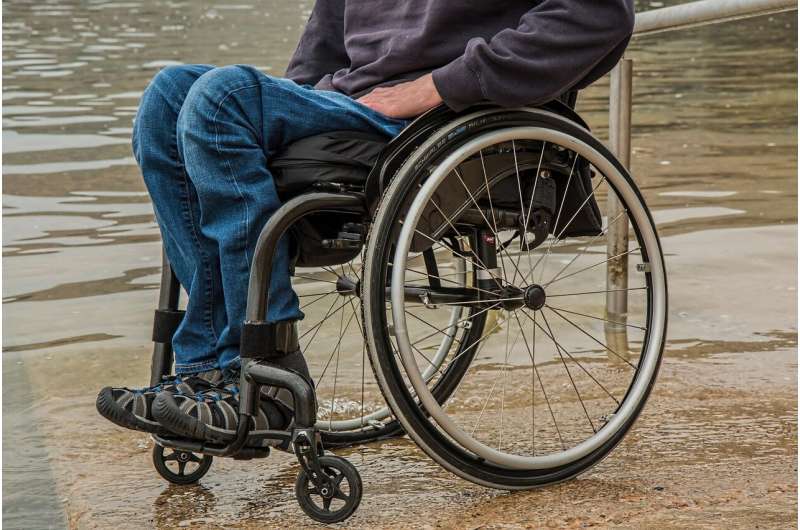Credit: CC0 Public Domain
Older patients have a much higher chance of developing a severe disability when they are hospitalized for an acute illness or injury such as a fall, according to a new Yale study.
Doctors say relatively little is known about the underlying processes that lead to severe disability among seniors. Severe disability is the need for personal assistance with three or more activities that are essential for daily living—such as walking, bathing, and putting on clothes.
"We know from prior research that severe disability may develop progressively or abruptly," said Dr. Thomas Gill, the Humana Foundation Professor of Geriatric Medicine and first author of the new study. Gill also is director of the Yale Program on Aging.
"We set out to determine the relative contributions of traditional risk factors and subsequent illnesses and injuries to severe disability that develops progressively versus catastrophically or abruptly," Gill said.
Gill and his colleagues looked at data from the Yale PEP Study, a longitudinal study of more than 750 people age 70 and older in Connecticut. The Yale PEP Study includes monthly assessments of acute illnesses or injuries and of disability in essential activities of daily living over a period of nearly 19 years.
The researchers found that abrupt (also known as "catastrophic") cases of severe disability occurred three times more often than progressive cases of severe disability.
In addition, they found that acute illnesses and injuries were a much stronger indicator of eventual severe disability than leading risk factors such as frailty, cognitive impairment, vision problems, and impairments in physical capabilities.
The likelihood of developing catastrophic severe disability was 177 times greater for people with a hospitalization following acute illness or injury than for people with the leading risk factor. The likelihood of developing progressive, severe disability was 20 times higher for people with a subsequent hospitalization than for those with the leading risk factor.
"To reduce the burden of severe disability in an aging society, more aggressive efforts will be needed to prevent and manage acute illnesses and injuries and to facilitate recovery after these debilitating events," Gill said.
The researchers said more attention must be given to strategies that prevent falls, enhance mobility, support effective therapies after hospitalization, and emphasize at-home care rather than inpatient care.
The study appears in the journal JAMA Network Open.
More information: Thomas M. Gill et al. Risk Factors and Precipitants of Severe Disability Among Community-Living Older Persons, JAMA Network Open (2020). DOI: 10.1001/jamanetworkopen.2020.6021
Journal information: JAMA Network Open
Provided by Yale University





















